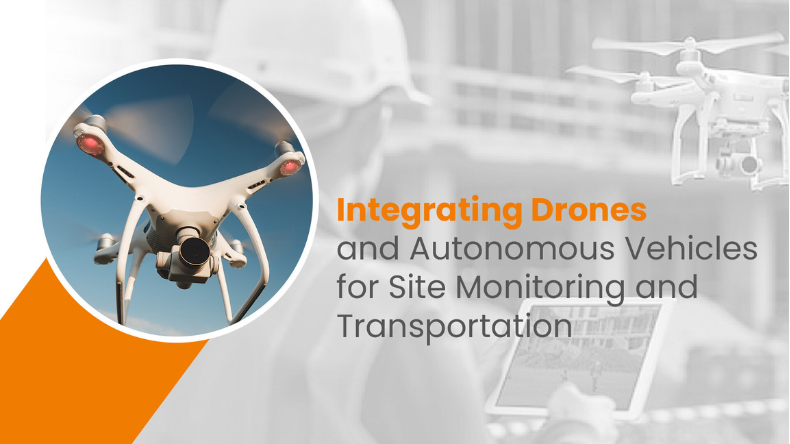Reading Time: 3 minutes
With technology playing an increasingly crucial role in improving efficiency, safety, productivity & Construction Innovation, Two emerging technologies that have the potential to revolutionize the industry are drones and autonomous vehicles.
The Benefits of Drones in Construction
Drones have become a valuable tool for construction site monitoring and inspection. By capturing aerial images and videos, drones can provide:
- Real-time site monitoring: Drones can quickly and easily capture images and videos of the construction site, allowing project managers to monitor progress and identify potential issues.
- Improved safety inspections: Drones can be used to inspect hard-to-reach areas, such as rooftops, scaffolding, and bridges, reducing the risk of accidents.
- Accurate measurements and surveying: Drones equipped with advanced sensors can accurately measure distances, volumes, and elevations, saving time and reducing costs.
The Potential of Autonomous Vehicles in Construction
Autonomous vehicles, or self-driving vehicles, have the potential to transform the way construction materials and equipment are transported. By automating transportation tasks, autonomous vehicles can:
Work Smarter, Not Harder
iFieldSmart empowers your team with AI-driven efficiency to simplify scheduling, boost collaboration, and keep projects on track.
Schedule a Meeting- Increase efficiency: Autonomous vehicles can operate 24/7, reducing downtime and increasing productivity.
- Improve safety: By removing human error, autonomous vehicles can reduce the risk of accidents and injuries.
- Reduce environmental impact: Autonomous vehicles can optimize routes and reduce fuel consumption, leading to lower emissions.
Integrating Drones and Autonomous Vehicles
The integration of drones and autonomous vehicles can further enhance the efficiency and safety of construction innovation and projects. For example, drones can be used to map the construction site and identify optimal routes for autonomous vehicles. Autonomous vehicles can then transport materials and equipment to and from the site, while drones can monitor their progress and identify any potential obstacles.
Key Challenges and Considerations
While the potential benefits of integrating drones and autonomous vehicles are significant, there are several challenges that need to be addressed:
- Regulatory hurdles: Regulations governing the use of drones and autonomous vehicles in construction are still evolving.
- Technical limitations: The technology for both drones and autonomous vehicles is still developing, and there may be limitations in terms of range, payload capacity, and weather conditions.
- Infrastructure requirements: The infrastructure required to support autonomous vehicles, such as roads and charging stations, needs to be developed.
- Cybersecurity concerns: As construction sites become increasingly connected, cybersecurity risks must be addressed.
The integration of drones and autonomous vehicles is just one example of how technology is transforming the construction Innovation. By embracing innovation and addressing the challenges, construction companies can improve efficiency, reduce costs, and enhance safety.
As technology continues to advance, it is likely that we will see even more innovative applications of drones and autonomous vehicles in the construction industry.








